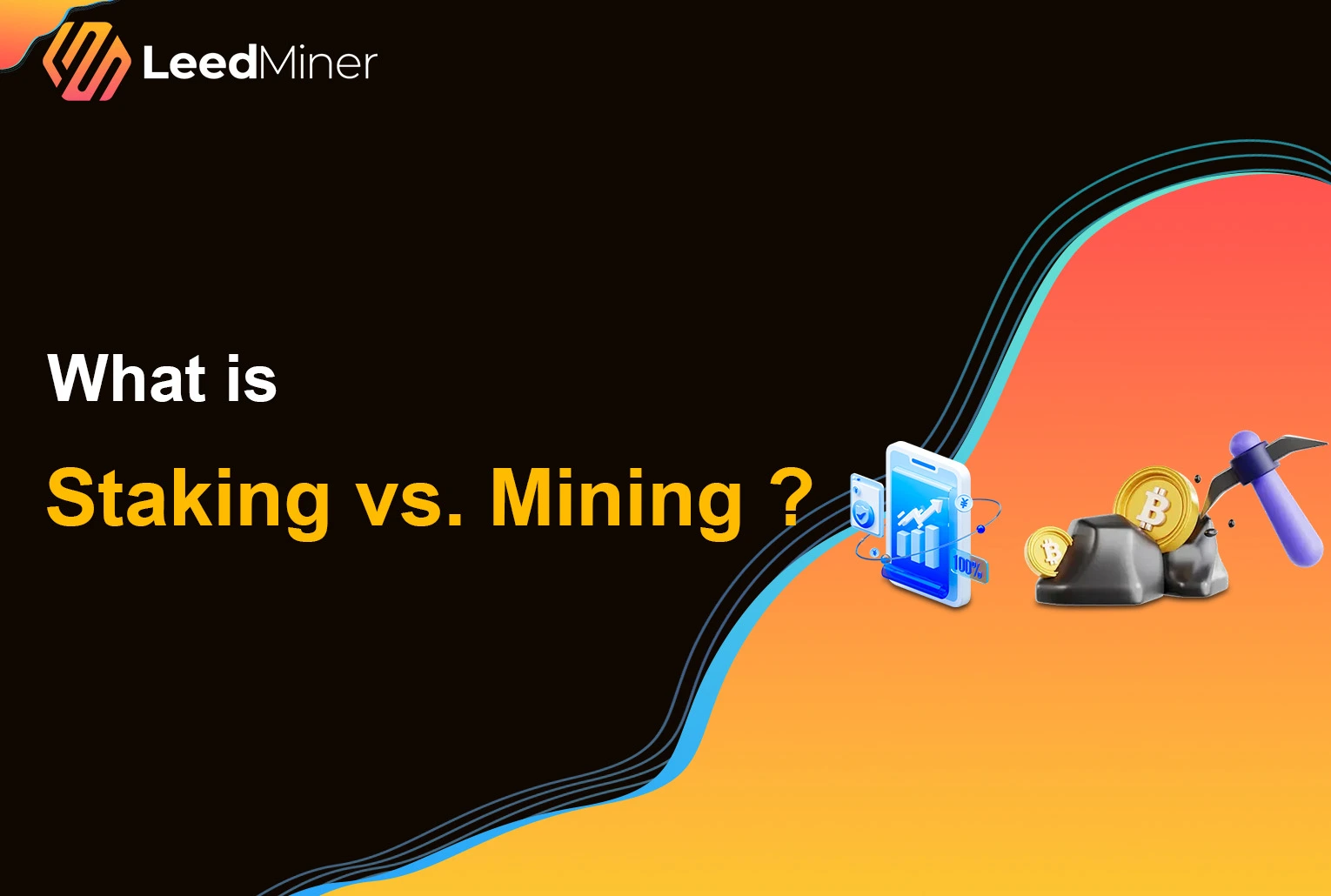How to Join a Mining Pool : A Step-by-Step Guide
Mining101
- tagwu

SUMMARY
Cryptocurrency mining can be a rewarding yet competitive endeavor. For most miners—especially beginners—joining a mining pool is a smart move to increase the chances of earning steady rewards. But what exactly is a mining pool, and how do you join one? This guide walks you through every step, from choosing the right pool to setting up your miner and withdrawing your earnings.
What is a Mining Pool
Choose the Right Mining Pool

Before you can join a pool, you need to select the one that best fits your needs. Here are key factors to consider:
- Fees: Most pools charge a small percentage (1%–3%) of your earnings as a fee.
- Payout Method: Pools offer different payout schemes like PPS (Pay Per Share), PPLNS (Pay Per Last N Shares), and FPPS (Full Pay Per Share). Each has pros and cons regarding reward frequency and fairness.
- Minimum Payout Threshold: Some pools require you to reach a minimum balance before payout.
- Reputation & Uptime: Choose a well-established pool with high uptime, transparent operations, and a good reputation.
- Server Locations: Select a pool with servers close to your region to reduce latency and improve stability.
Recommended Mining Pools & Tools
Choosing a reliable mining pool is essential for stable payouts and a smooth mining experience. Here are some of the most popular and trusted mining pools widely used by miners around the world:
ViaBTC
A comprehensive mining pool that supports multiple cryptocurrencies such as BTC, LTC, BCH, and more. ViaBTC is known for its user-friendly interface, stable earnings, and cloud mining services.
F2Pool
One of the oldest and largest pools in the world. F2Pool supports dozens of cryptocurrencies and offers detailed performance stats, transparent earnings, and support in multiple languages.
Antpool
Operated by Bitmain, Antpool is highly trusted for Bitcoin and other SHA-256 based mining. It provides features like real-time monitoring, multiple payout methods, and security tools.
Want to Compare Pools for Other Coins
To check which mining pools support different cryptocurrencies, visit:
This site provides up-to-date statistics and comparisons of active mining pools across hundreds of coins, including their hashrates, number of miners, payout models, and more.
Prepare Your Mining Hardware
To join a mining pool, your mining equipment must be ready:
- Mining Rig: ASIC miners (like Antminer, Whatsminer) or GPUs depending on the coin you’re mining.
- Stable Power Supply: Mining consumes a lot of electricity, so ensure your setup is safe and reliable.
- Reliable Internet: A consistent connection ensures your miner communicates effectively with the pool server.
Make sure your hardware supports the coin’s algorithm (e.g., SHA-256 for Bitcoin, Ethash for Ethereum Classic, Scrypt for Litecoin and Dogecoin).
Install and Configure Mining Software
Depending on your mining setup, there are two common ways to configure your miner:
1. Managing Multiple Devices (Multi-Miner Setup)
If you have several mining machines, it’s more efficient to use brand-specific control software. These tools—often available on the official website—allow you to scan your local network and detect all compatible miners automatically. With centralized access, you can configure mining pools, update firmware, and monitor performance across multiple devices with ease.
Examples include:
- Antminer Tool (Bitmain)
- WhatsMiner Tool (MicroBT)
- Goldshell Miner Manager
2. Configuring a Single Miner (Standalone Setup)

For individual miners, you can access the miner’s web interface directly. Make sure your computer and the miner are connected to the same network and are on the same subnet, otherwise you won’t be able to access the miner’s backend. Here’s how:
Find the Miner’s IP Address
- Ensure your PC and miner are on the same local network.
- You can find the IP by logging into your router’s admin page and checking the connected devices list.
- Alternatively, use an IP scanner tool (such as Advanced IP Scanner or Angry IP Scanner) to detect the miner’s IP address on your network.
Access the Miner’s Web Interface
- Open a browser and enter the IP address.
- Make sure your computer is on the same network segment; otherwise, the connection may be blocked.
Log In
- Enter the default username and password (usually “root/root” or listed on the device sticker or manual).
Configure Mining Pool Settings
- Input the pool’s stratum URL, your worker name, and a password if needed.
Monitor Operation
- Check real-time metrics such as hashrate, temperature, and fan speed.
- You can also update firmware and manage other system settings from the same dashboard.
Create an Account on the Pool

Most mining pools require you to register an account before you can start mining. Follow these steps:
Visit the Pool’s Official Website
Go to the official site of the pool you’ve chosen (e.g., F2Pool, ViaBTC, Antpool).
Register an Account
Sign up using your email address and create a secure password.
Set Up Your Wallet Address
This is where your mining rewards will be sent. Make sure to use a wallet that matches the coin you are mining. For example:
- If you’re mining Bitcoin, you need a Bitcoin wallet.
- If you’re mining Litecoin, use a Litecoin wallet.
- For merged mining (e.g., Namecoin with Bitcoin), you’ll also need to provide the correct wallet address for the merged coin.
Important: Each cryptocurrency requires its own dedicated wallet. If your pool supports merged mining and rewards bonus coins, you’ll need to configure wallets for those coins too. If no wallet is set for a bonus coin, you may not receive it.
Create Workers
In your account dashboard, set up one or more workers—these represent each mining device under your account. Typically, workers are named like username.worker1, username.worker2, etc.
How to Choose the Right Wallet
Choosing the right wallet depends on your mining goals, the amount of crypto you plan to store, and how frequently you’ll access your funds. Here’s a quick guide to help you decide:
| Use Case | Recommended Wallet Type | Why |
|---|---|---|
| Beginner / Small Rewards | Mobile Wallet / Exchange Wallet | Easy to set up and access |
| Frequent Trading | Exchange Wallet | Direct access to market for fast trades |
| Medium-Term Storage | Desktop Wallet | More control and privacy than mobile or exchange wallets |
| Long-Term / Large Holdings | Hardware Wallet | Offline storage with top-level security |
Tips:
Always enable two-factor authentication (2FA).
Write down and back up your seed phrase or private key safely.
Avoid keeping large balances on exchange wallets due to potential hacking risks.
Need more help?
If you’re unsure how to choose the right crypto wallet for your mining payouts, check out our detailed guide: [How to Choose a Crypto Wallet]
Configure Your Miner
You’ll need to enter specific pool information into your miner:
Pool Address (Stratum URL)
Provided by the pool (e.g., stratum+tcp://btc.f2pool.com:3333)
Worker Name
Typically in the format username.worker1
Password
Often optional, sometimes used for controlling miner behavior
You can enter this information using the miner’s control panel or through a configuration file.
Start Mining
Once everything is set:
Save your settings.
Restart the miner.
Watch the hashrate begin to appear on your mining dashboard.
The pool will now distribute rewards based on your contribution.
Monitor and Optimize
Ongoing maintenance is crucial:
- Track Hashrate & Share Submission: Make sure your miner is submitting valid shares without too many rejects.
- Reduce Downtime: Ensure your power and internet are uninterrupted.
- Stay Cool: Monitor temperature and dust buildup.
- Update Firmware: Keep your mining software and firmware updated for security and performance.
Some pools also provide mobile apps or APIs to help monitor your operations on the go.
Withdraw Your Earnings
Most pools allow manual or automatic withdrawals. Here’s what you should know:
- Set a Wallet Address: Use a secure, compatible wallet (e.g., hardware wallet, exchange wallet).
- Understand Fees: Some pools charge withdrawal fees; consider batching your payouts if needed.
- Track Your Balance: Withdraw once you reach the pool’s minimum payout threshold.
Troubleshooting Tips
Encountering issues is normal. Here are some quick fixes:
Low Hashrate
Check cables, connections, and temperature.
Rejected Shares
May indicate poor internet or incorrect settings.
No Earnings Showing
Verify miner is active and properly configured.
Pool Connection Errors
Double-check the pool address and network stability.
CONCLUSION
Joining a mining pool is the best path for most miners looking to generate steady crypto income. By following this guide, you’ll be well-equipped to choose a reputable pool, configure your miner correctly, and optimize your earnings. Stay informed, stay secure, and happy mining!
FAQs on Join a Mining Pool
What is a mining pool and why join one?
A mining pool is a group of miners who combine their computing power to increase the chances of earning consistent rewards, which are then split among participants.
Can I switch mining pools later?
Yes, you can switch pools anytime by updating your miner’s pool configuration settings with the new pool’s URL and worker details.
Do mining pools charge fees?
Most pools charge a small fee (usually 1–3%) from your earnings. This fee supports the pool’s infrastructure and maintenance.






